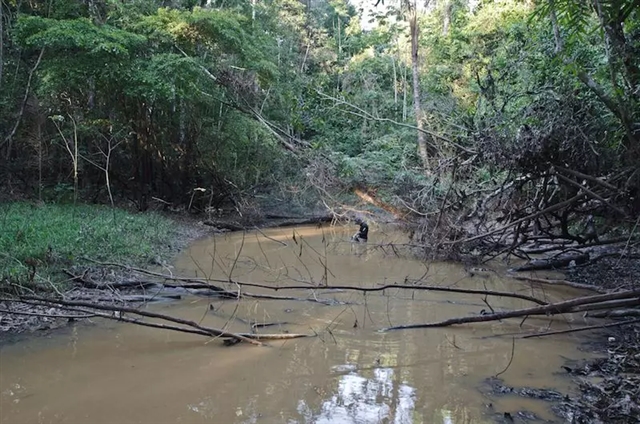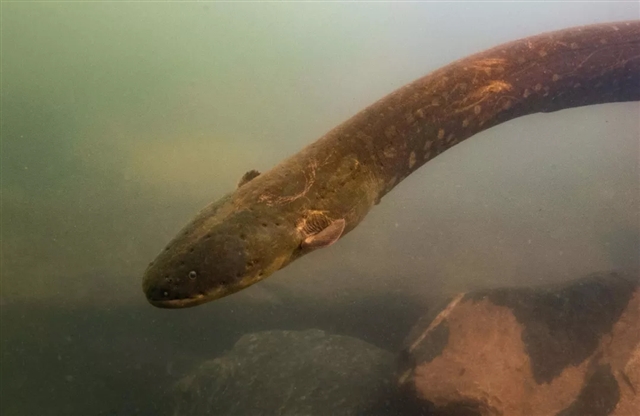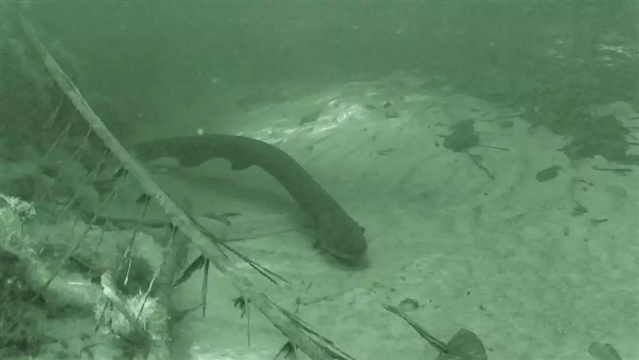论文标题:Unexpected species diversity in electric eels with a description of the strongest living bioelectricity generator
期刊:Nature Communications
作者:C. David de Santana, William G. R. Crampton, Casey B. Dillman, Renata G. Frederico, Mark H. Sabaj, Raphaël Covain, Jonathan Ready, Jansen Zuanon, Renildo R. de Oliveira, Raimundo N. Mendes-Júnior, Douglas A. Bastos, Tulio F. Teixeira, Jan Mol, Willian Ohara, Natália Castro e Castro, Luiz A. Peixoto, Cleusa Nagamachi, Leandro Sousa, Luciano F. A. Montag, Frank Ribeiro, Joseph C. Waddell, Nivaldo M. Piorsky, Richard P. Vari ,Wolmar B. Wosiacki
发表时间:2019/09/10
数字识别码:10.1038/s41467-019-11690-z
微信链接:https://mp.weixin.qq.com/s/F4vBKJEpQlU-wglD9JRBEw
《自然-通讯》发表的一篇论文Unexpected species diversity in electric eels with a description of the strongest living bioelectricity generator描述了两种电鳗新种,其中一种名为Electrophorus voltai,它的输出电压可达860伏,远超此前已有的报道,使之成为现存最强大的生物电“发电机”。

图1:Electrophorus electricus和E. voltai栖息的典型高地环境 图源:C. Daivd de Santana

图2:E.varii栖息的典型低地环境 图源:D. Bastos
250年前,电鳗首次被描述。但是,在某种程度上因为它们的大小和特化的放电形态,人们一直假设电鳗只有一个单一物种,即Electrophorus electricus,它们广泛分布在大亚马逊地区(Greater Amazonia)。

图3:已被人类所熟知的电鳗品种Electrophorus electricus图源:R. Covain
美国华盛顿哥伦比亚特区史密森尼博物馆,美国国立自然历史博物馆的C. David de Santana及同事检查了来自大亚马逊地区的107个电鳗样本,以确定它们是否为单一物种。根据线粒体与核DNA、形态、地理及生态分布,作者得出结论:电鳗存在三种常见种——E. electricus、E. voltai和E. varii。他们分析表示这三种电鳗占据不同的区域,分别发现于圭亚那地盾、巴西地盾和亚马逊盆地。他们还发现E. voltai可以输出860伏电压,远超之前电鳗有记录的650伏。

图4:Electrophorus voltai图源:L. Sousa

图5:Electrophorus varii 图源:D. Bastos
作者认为对这些电鳗种进行基因组测序和比较有望阐明电鳗高压放电的起源和所涉及的身体结构。
摘要:Is there only one electric eel species? For two and a half centuries since its description by Linnaeus, Electrophorus electricus has captivated humankind by its capacity to generate strong electric discharges. Despite the importance of Electrophorus in multiple fields of science, the possibility of additional species-level diversity in the genus, which could also reveal a hidden variety of substances and bioelectrogenic functions, has hitherto not been explored. Here, based on overwhelming patterns of genetic, morphological, and ecological data, we reject the hypothesis of a single species broadly distributed throughout Greater Amazonia. Our analyses readily identify three major lineages that diverged during the Miocene and Pliocene—two of which warrant recognition as new species. For one of the new species, we recorded a discharge of 860 V, well above 650 V previously cited for Electrophorus, making it the strongest living bioelectricity generator.
(来源:科学网)
特别声明:本文转载仅仅是出于传播信息的需要,并不意味着代表本网站观点或证实其内容的真实性;如其他媒体、网站或个人从本网站转载使用,须保留本网站注明的“来源”,并自负版权等法律责任;作者如果不希望被转载或者联系转载稿费等事宜,请与我们接洽。